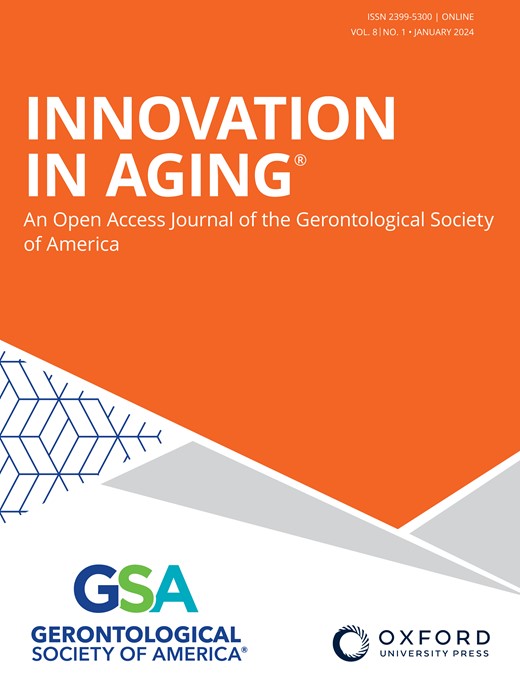护理的基础设施:在新加坡重建家园和家庭
IF 4.9
3区 医学
Q1 GERIATRICS & GERONTOLOGY
引用次数: 0
摘要
摘要 护理工作包括具体的日常任务,这些任务以家庭为基础并围绕家庭展开,但很少有研究将护理工作视为将家庭塑造成护理场所的实践活动。我们研究了促成居家护理的人员、活动和事物的社会物质安排,询问居家护理是如何协调、维持和提供的,以及居家护理又是如何重新构建的。我们对 40 位照顾配偶和/或父母的家庭照顾者进行了深入访谈,他们的年龄在 55-85 岁之间。通过 "护理基础设施 "这一理论视角,对促成护理的关系、活动和事物进行了分析。护理工作是通过人和物的网络来实现的,其中包括家庭成员、住家雇工、医务人员和社会工作者;监控摄像头等技术,以及在家中战略性地放置镜子以监控接受护理者;全天候开启的电视;轮椅和坡道等辅助设备,以及在家中放置病床等。- 这些都改变了生活安排和常规。护理任务、责任和决策的特点是人与人之间以及人与事物之间的协商、紧张和妥协。护理人员在不确定、冲突和无法满足需求的情况下进行调整、适应和随机应变。我们的结论是,由于护理工作而出现的人、活动和事物的新的社会物质安排,改变/破坏了家作为护理者的安全、熟悉和舒适之地的概念。对事物、活动和人的安置/迁移及相互联系的理解,有助于了解家是如何影响护理效果的,反之亦然。本文章由计算机程序翻译,如有差异,请以英文原文为准。
INFRASTRUCTURES OF CAREGIVING: RECONSTITUTING HOMELINESS AND FAMILY IN SINGAPORE
Abstract Caregiving comprises concrete everyday tasks that are built-on and revolve around the home, yet few studies have looked at caregiving as practice(s) that shape the home as a place of/for care. We examined the socio-material arrangements of people, activities, and things that enable caregiving at home, asking how caregiving is orchestrated, sustained, and delivered at home, and how the home is in turn re-constituted by caregiving. In-depth interviews were conducted with 40 family caregivers, aged 55-85 years, caring for their spouse and/or parent(s). Relations, activities, and things that enabled caregiving were analyzed through the theoretical lens of “care infrastructure”. Caregiving is enacted through a network of people and things – including family members, live-in hired helpers, medical and social workers; technologies like surveillance cameras and strategically placed mirrors at home to monitor care recipients; televisions turned-on 24/7; assistive devices such as wheelchairs and ramps, and placement of hospital beds at home, etc. – that change living arrangements and routines. Care tasks, responsibilities, and decisions are marked by negotiations, tensions, and compromises between people and with things. Caregivers appropriate, adapt, and improvise in situations of uncertainty, conflict, and impossible demand. We conclude that new socio-material arrangements of people, activities, and things that emerge because of caregiving change/disrupt the notion of home as a place of safety, familiarity, and comfort for caregivers. Understanding the emplacement/displacement and interconnection of things, activities, and people sheds light on how the home shapes the effects of caregiving and vice versa.
求助全文
通过发布文献求助,成功后即可免费获取论文全文。
去求助
来源期刊

Innovation in Aging
GERIATRICS & GERONTOLOGY-
CiteScore
4.10
自引率
0.00%
发文量
72
审稿时长
15 weeks
期刊介绍:
Innovation in Aging, an interdisciplinary Open Access journal of the Gerontological Society of America (GSA), is dedicated to publishing innovative, conceptually robust, and methodologically rigorous research focused on aging and the life course. The journal aims to present studies with the potential to significantly enhance the health, functionality, and overall well-being of older adults by translating scientific insights into practical applications. Research published in the journal spans a variety of settings, including community, clinical, and laboratory contexts, with a clear emphasis on issues that are directly pertinent to aging and the dynamics of life over time. The content of the journal mirrors the diverse research interests of GSA members and encompasses a range of study types. These include the validation of new conceptual or theoretical models, assessments of factors impacting the health and well-being of older adults, evaluations of interventions and policies, the implementation of groundbreaking research methodologies, interdisciplinary research that adapts concepts and methods from other fields to aging studies, and the use of modeling and simulations to understand factors and processes influencing aging outcomes. The journal welcomes contributions from scholars across various disciplines, such as technology, engineering, architecture, economics, business, law, political science, public policy, education, public health, social and psychological sciences, biomedical and health sciences, and the humanities and arts, reflecting a holistic approach to advancing knowledge in gerontology.
 求助内容:
求助内容: 应助结果提醒方式:
应助结果提醒方式:


